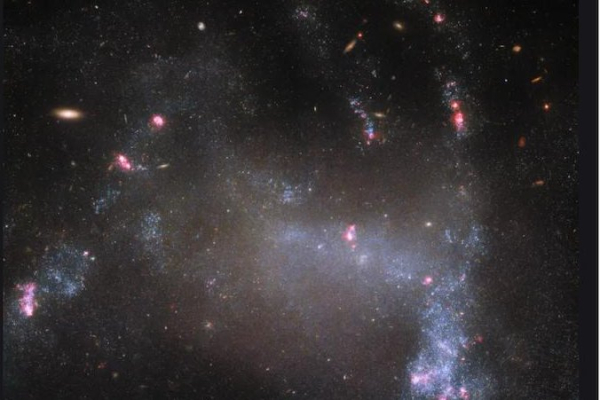Hubble telescope spots spider galaxy 30 million light years from Earth

1 of 2 | NASA said Friday that the Hubble Space Telescope has spotted a “spider galaxy” called UGC 5829 that’s about 30 million light years from Earth. Photo courtesy of NASA
NASA said Friday the Hubble Space Telescope has spotted a spider galaxy, an irregular galaxy about 30 million light years from Earth.
NASA said despite the lack of previous observations of this relatively faint galaxy, it has a distinct and descriptive name: the Spider Galaxy. That’s because it has distorted galactic arms resembling a spider. Advertisement
It appears to consist of glowing, star-forming tips shaped somewhat like spider legs.
The galaxy, known as UGC 5829, was identified from two different Hubble observing programs.
One of Hubble’s observing programs looks at relatively nearby galaxies, attempting to build color versus brightness diagrams of galaxy stars.
Each of those observations took roughly 95 minutes or one Hubble orbit. They provided an archival record of various types of stars in different galaxies and environments.
The second observation program employed Hubble’s Wide Field Camera 3 to view dwarf galaxy star clusters. It used Hubble’s ultraviolet capabilities plus an ability to see fine detail in order to better understand the dwarf galaxies environments where the stars form.
Those star-forming regions appear in the telescope images as bright pink nebulae or clouds.
The Wide Field Camera was installed by astronauts in 2009 during Hubble Servicing Mission 4. Advertisement
